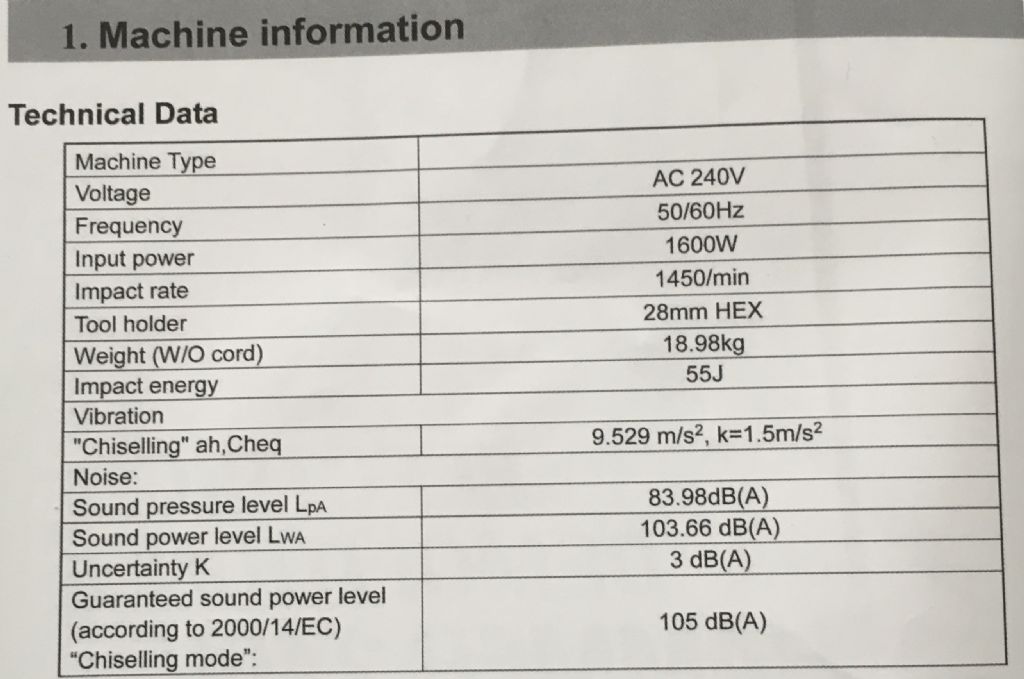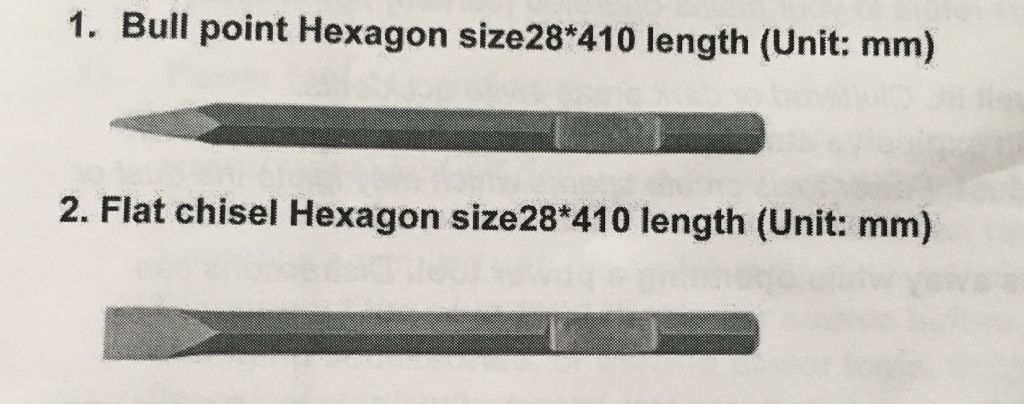As others have calculated, Michael's Jack Hammer does about 1.3kW of work, which is roughly equivalent to six fit men, or ten weedy ones, and each blow contains as much energy as Robin's "3 lb lump hammer falling 13.5 feet".
Can't be doing with nasty old imperial measure, but that's about 55 Joules hitting the target at about 7 metres per second. The pressure is spread over the area of the lump hammer, rather than concentrated at a chisel point, but enough to deliver a nasty injury.
The Jack Hammer's acceleration figures suggest the speed of it's chisel blows are much the same as Robin's falling lump hammer. Speed makes a big difference. The amount of energy used by a human to push a car slowly won't damage the car. But if the same amount of energy is delivered quickly, the car and human are both damaged. If the human applies the energy with a spear, or hammer, then the car will be damaged badly. Pushed objects have time absorb the energy and maybe move out of the way. When a struck object doesn't have enough time to absorb the energy, the material it is made of is displaced, resulting in cuts, disintegrations and penetrations.
Jack Hammers are designed to deliver sharp blows at the chisel point without wrecking their internals. I believe it's done by the motor slowly storing energy in a flywheel, that operates a faster but still relatively slow moving internal hammer, that delivers all it's energy into the chisel point in a rapid series of short sharp blows. Although most of the energy is dissipated in the target, the chisel point is replaceable, the internals take a beating, and the motor won't last forever!
Dave
duncan webster 1.






